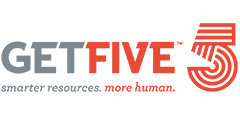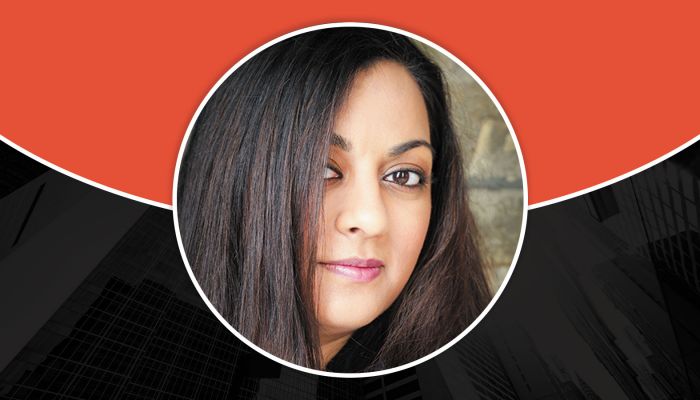Our CEO Darren Kimball recently caught up with Aashna Sinha, Head of Talent for Richemont North America, the luxury goods giant based in Switzerland that owns brands like Cartier, Montblanc, Piaget, Van Cleef & Arpels and others. We talked about how HR at Richemont North America is managing the dual crises of the pandemic and the unrest that ensued after the murder of George Floyd.
DK: What has been your biggest focus this year?
AS: Crisis management. Whether we’re talking about the pandemic or the diversity, equity, and inclusion (DEI) space, our goal is to be there for our employees, in the way that they need in these difficult moments.
DK: How are you approaching that?
AS: It starts with the fact that we can’t take a ‘one size fits all’ approach. The way that our colleagues in other markets, other countries, and other regions are handling things won’t necessarily work here in North America. It would be easy for our HQ to say: “Here’s the template, do it this way,” but we have to take a localized approach. It helps to have global principles and overarching guidance in place, but we have to think about what our specific population needs, and what their specific expectations are.
DK: What was your response to the pandemic?
AS: It has been a combination of empathy and responsibility. We’ve said, we’re here for you. We’re listening. We’re trying to take care of you. Our first question was: Are all of our people safe? Have we accounted for everybody? Then, we had to think about whether all of our locations—corporate offices, logistics centers, workshops, schools and boutiques—were secured in the event of a shutdown. What are we doing to support all our colleagues who can’t go into their work location every day, as well as those who can but will be dealing with any number of unforeseen circumstances?
So, the first step was physical safety and health. The next step was taking a series of actions to minimize negative impact for our people. What can we do to mitigate some of the challenges that the business will undoubtedly face? How can we enable our teams with new technologies in order to continue serving their clients and interacting with one another?
DK: What did you do to keep the lines of communication open with employees?
AS: We made sure our leaders were engaging with our people. One of the first things we did when the pandemic began was to start a weekly virtual town hall on Zoom for the entire region to dial into, which was hosted by our executive team.
DK: What did those Zoom meetings entail? What were you talking about with your employees?
AS: At first, it was about sharing critical information related to the pandemic — here’s what we’re doing to combat the risks to health, safety, and business continuity.
Over time, those conversations became more about how we were evolving as an organization. What are we doing to continue serving our clients in this rapidly changing world of ‘new retail’ which is increasingly online? At the same time, what does it mean for our boutiques to offer curbside pickup and private shopping appointments in a socially distanced manner without compromising the personalized luxury touch our clients expect from us? Above all else, whether in-store or online, how can we continue to provide a stellar client experience?
The shift in topics has been quite inspiring, actually. Instead of focusing on just-in-time information about things like what to do if you get diagnosed with COVID, we began using this communication channel to engage with our teams and shine a spotlight on the creative solutions they put in place to keep our clients happy.
DK: Who else is on hand to moderate the discussions?
AS: The invitation is open to all colleagues across the region, and they are welcome to ask questions in a chat box. We try to answer every single one. Usually there are a couple of guest panelists, like our head of HR and maybe a brand leader who discusses the topics of the day. Most importantly, these are unscripted discussions: our goal is to engage with our colleagues, in real-time, and with as much transparency and authenticity as possible.
DK: It sounds like this has been a positive experience for your organization.
AS: It has been critical to maintaining an open line of communication, and it has definitively helped draw the organization together. Colleagues who may not otherwise have gotten visibility to our senior leaders get the opportunity to engage with them, rather informally, and that kind of interaction breaks down barriers. You realize that your leaders are experiencing these unprecedented times just like the rest of us. It builds a sense of community and reminds our colleagues that they are not alone.
DK: Let’s talk about your DEI efforts. How have you approached that in a year that has seen so much social unrest?
AS: We have taken a similar approach to how we handled the pandemic, in that the first step is listening and responding. We were already doing a lot of work on the DEI front even before the events of this summer, so we already had some good momentum within our organization. We held a really powerful workshop in January for our leadership team around disrupting everyday biases, and we were excited to roll it out for the rest of the organization, too.
The first step we took after the murder of George Floyd was to communicate to our colleagues. Our executive team acknowledged it: it was important to say the words out loud, explicitly, and reiterate our commitment to an open and inclusive environment for our colleagues, clients and partners. We also put out a really powerful message around Juneteenth shortly after that, followed by a globally broadcasted virtual panel event to celebrate PRIDE month.
DK: Did you get input from your employees?
AS: Yes. Listening to our colleagues was a major priority. In the early weeks of June we invited all of our employees across the region to participate in listening sessions so that we could learn what was on their minds. It wasn’t a forum to solve things, but to truly listen and identify the key areas of opportunity. We wanted to craft a response that was thoughtful, deliberate, and would address the right things at the right time in the right way.
DK: What was the result?
AS: After listening and responding, the next step is learning and evolving. We have a training program around mitigating unconscious bias for leaders, for managers, and for individual contributors, and we’re continuing to think about additional ways to equip our colleagues with the tools to handle tough conversations around DEI topics as our organization evolves and grows.
We’ve also hired a head of DEI for the region to help guide our organization through these uncharted waters. We are also looking forward to starting a regional DEI council that colleagues can participate in, which will serve as a great platform for engagement and advocacy across the region.
I think our most important guiding principle as we have navigated DEI topics these last few months is that it is truly a journey. We are continuing to listen, learn, and advocate thoughtfully to accelerate our efforts in this space. We recognize this is not just a moment within our region. We are experiencing a movement. We are all living, breathing, and feeling this experience in our own ways – but we must all pay attention and act.
DK: Aashna, thank you!









